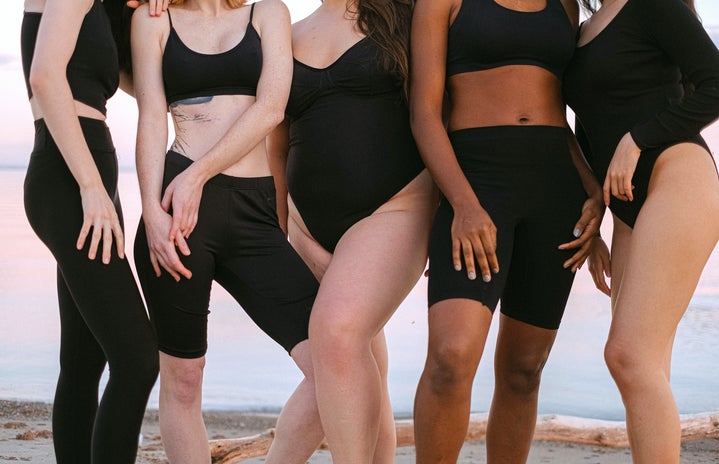When I was in elementary school, the most attractive body type was skinny and curve-less, where low-rise jeans and skinny jeans looked the best on women. In middle school, viral workout videos started trending about how to get the “perfect thigh gap.” But, in high school, the messaging completely changed—bigger thighs and butts were considered more attractive. The Kardashians and other celebrities promoted the BBL trend and women were considered “flat” if they didn’t have these types of curves. As someone with a curvy body type, who never had a thigh gap or flat stomach, for the first time in my life I began to see myself as attractive. It’s scary to think that beauty standards can change someone’s perception of themselves so much, especially growing young girls who are particularly vulnerable to messages from the media. Society treats women’s bodies like fashion trends, going in and out of style in the blink of an eye.
That’s why the New York Times headline from earlier this month, “Bye-bye Booty: Heroin Chic is Back” was sad to see, but unsurprising nonetheless. The article directly discusses body types as if they are fashion trends, comparing “questionable trends” of Uggs and low-rise jeans to the super-skinny body type “heroin chic”. While the article does go on to discuss the negative effects of putting skinny bodies on a pedestal once again, I believe it fails to discuss the bigger issue at hand, which is that as a society we have made it acceptable to look at someone and decide if they fit a “trending” body type rather than appreciating them for their own unique beauty. When someone is viewed as attractive one year, and immediately less attractive the next, the issue is not with how beautiful they are, but rather the lens through which they are perceived.
Not only are these super-skinny beauty standards unrealistic, but they are dangerous. The term “heroin chic” itself promotes an idea that women must look so skinny to the point of unhealthiness to look beautiful, whether it be the result of drug use or disordered eating. According to a recent article in Cosmopolitan, the term “heroin chic” was created in the 90s and referred to women who were extremely skinny, had pale skin and had dark circles around their eyes. Many have voiced their anger toward this “trend” coming back now. One of the most vocal people speaking out against this is Jameela Jamil, a British actress, who posted her thoughts on Instagram and also wrote an article about it for Paper Magazine. In this passion-filled article, she recounts her own experiences from the “heroin chic” era, during which she “barely made it out alive.” She says that she and others in her generation would go out of their way to look sickly by applying dark eyeshadow around their eyes, throwing up food, over-exercising, and trying unhealthy diets to lose incredible amounts of weight.
The list of negative effects of the “heroin chic” trend coming back can go on and on. It’s about time we pushed back and stopped letting the media turn our bodies into trends. No matter what year it is, we should be allowed to appreciate our natural features. Whether the trend is to look skinnier by starving ourselves and over-exercising, or curvier by having unnecessary surgeries done, we cannot let the beauty industries and media convince us to undergo unhealthy lifestyles to fit the beauty standard. It is just not worth it.


